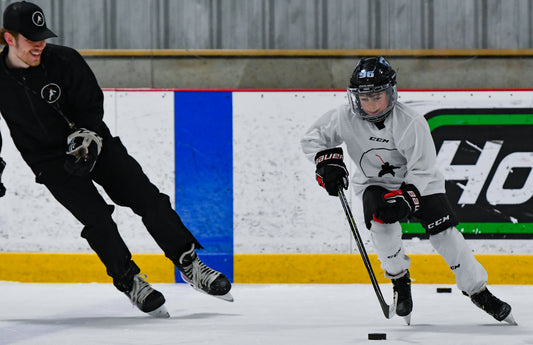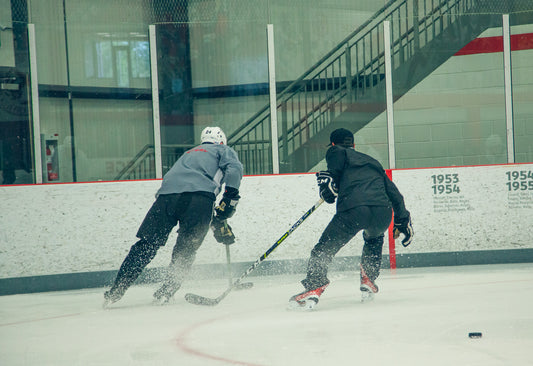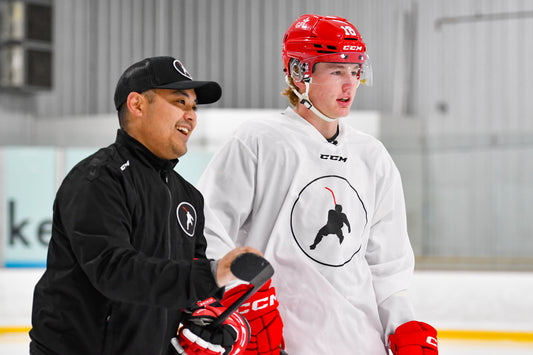Hey guys, is it just us or has the game changed? Last week we were talking with some of the top guys battling for the cup and they said yeah, it’s TRANSITION. We discussed for a while and went back and forth on deciphering a true definition. Does it mean playing fast? Well yes… and no…. Hint, Hint for next week’s blog.
History of transition focused hockey
Transition hockey has been around since the start of the game. It’s evolved over time and has taken many different shapes and forms, it’s actually really cool to study. Everything in life comes around full circle. The new becomes the old and the old becomes the new. It happens in every facet of culture and it’s happened in the game.
Think about the good old days when Gordie Howe was driving the net and the odd time when he didn’t beat his opponent with skill and power. The play would get broken up usually by a good stick (nobody could handle Gordie’s strength) and then there would be this opposite side winger coming across, buzzing “ON” his outside edge (remember a couple of blogs ago, be “ON” your edge not “IN” it). That winger was like batman. You couldn’t even see him in the picture and then swoop, he’s off in the other direction dictating play on the attack. That was awesome. Go back and watch that hockey, it’s a lesson in transition, support and puck movement, not to mention, tenacity, grit and toughness. Those guys could play and they did it with transition.
Or how about the famed Russians. They took the hockey world by storm in the 70’s and 80’s with a different type of transition. A controlled NZ regroup. You see, they were smart. They understood the concept of outnumbering. Heck they invented it, especially off the rush. Why turn and attack when numbers were not in their favour, they would ask? Makes sense. So patiently, a Russian defenceman would manage the puck until the entire 5-man attack was in place and like a band of foragers would attack typically 1 opposing player with 2 or 3 players. Tic, Tac, Toe, the game was easy.
Then came the Swedes and Fins with Olympic and World Championship success and their famed passive NZ trap that looks quite a bit like Guy Boucher’s 1-3-1. Tremendously effective in larger ice surfaces, it preys and goats players to certain areas of the ice where there is no space and then JUMP! The player had all options cut off and no escape. Turnover, transition, then wave after wave of attack! It worked then and still works now in certain situations and timing of the game.
Todays Transitional Powerhouses
Today’s game is unlike any era. Conceptually it’s probably most similar to the good old days but with the advance of full time athletes, off-ice training, equipment technology and specialized coaching the game has gotten so fast. Let’s look at the teams in this years Stanley Cup playoff that are having success. The first team to sweep in the first round has been the Vegas Golden Knights and when you think transition hockey, man they sum it up. Once Vegas doesn’t have the puck they are hounds to get it back, pressure comes from everywhere, backside, D standing up, forcing teams to chip, they recover. Regroup? Not a chance. Only on a line change. Let’s go, the puck is immediately moved D-D or pushed to the wall or the middle of the ice. Heck, we’ve got a bunch of guys in Vegas and we’ve watched them play a lot, they even quick hit the far side, it’s a thing of beauty. The opposing team is just trying to match speed, maintain gap to not give up the offensive blue, c’est come des avions, as they would say in French! The Los Angeles Kings are a very good and well coached hockey team, I’m talking really good and yes, they were beat up a little and lost Doughty for a game but man, Vegas and their transition hockey just kept coming, attacking with speed, wave after wave, sooner or later it just bowls you right over. Amazing.
Being a good transition hockey player
It’s your play without the puck. Support with speed and be creative. That’s it, simple as that. When we talk with our Vegas clients the first thing they say about their coach (who will win the Jack Adams trophy this year), Gerard Gallant is that he’s the least structured coach they’ve ever played for. Interesting. It actually just radiates when you watch them play, just awesome.
Playing without the puck is the single most deficient concept in minor hockey today. Most kids have a good idea when they have the puck, not so much when they don’t. Put your focus there, how can I get to the middle of the ice to support my buddy over here? Should I jam on my breaks and execute a cross over start to linear crossovers to support my buddy over here? You have to think like this and then work on the associated movement patterns and skills in practice to transfer to performance gains in games. If you do the opposite i.e.: Not thinking and working on the skill, you will become a good skilled player but no transfer. At PS, everything we do is about transferring, it has to be, right down to when we are working on skating mechanics. Everything needs to have a purpose and at the end of the day we’re not just building skilled athletes, we are building better hockey players.
So, next time you’ve got a chance to check out the Vegas Golden Knights do it. Even better, tug your Dad’s arm to go and check out a game, it’s a rocking building and a fun night, and maybe just maybe in between the league’s best pre-game show, the electric energy and the passionate fan base, you’ll notice today’s transition hockey, in our opinion they do it the best!




